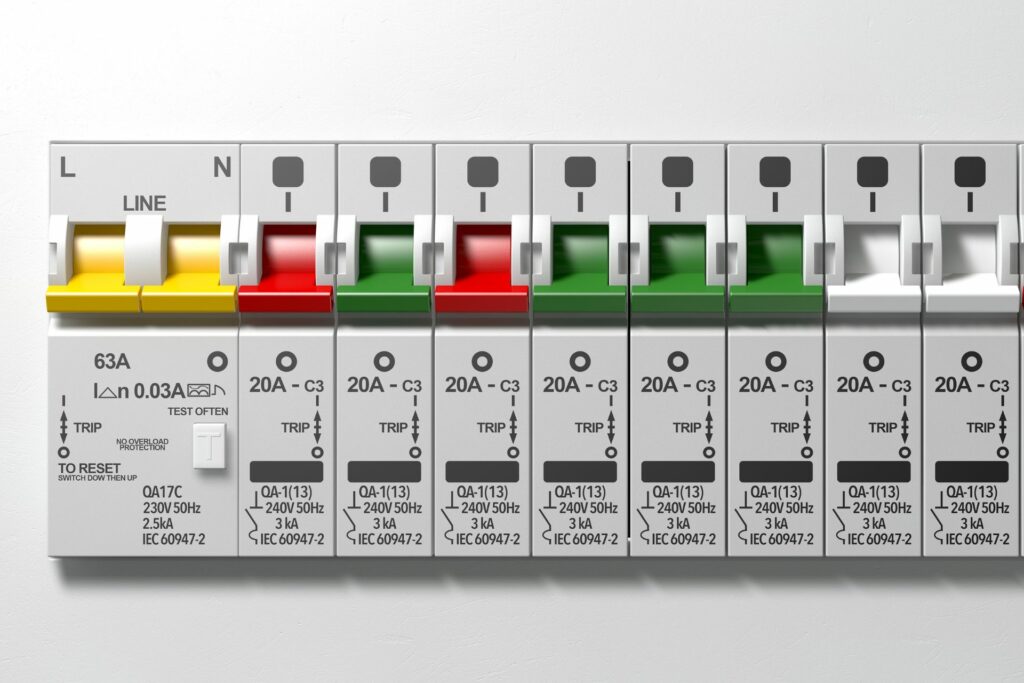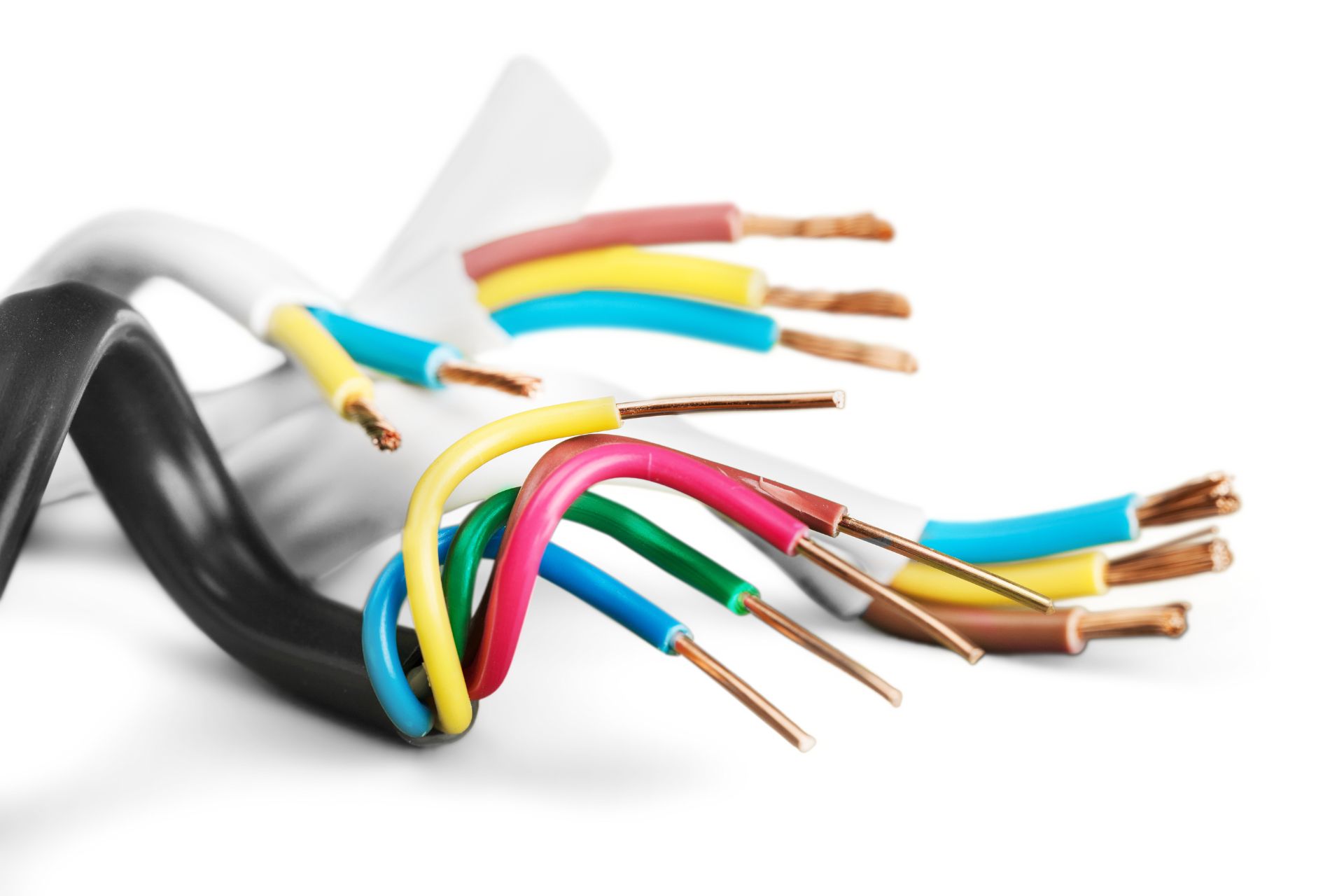Wire size and ampacity go hand in hand. The wire size tells you the ampacity, and the ampacity shows you whether or not the wire can accommodate a particular application. This raises questions about the wire size for 20 amps. This guide will educate you if you need help identifying the correct gauge for 20-amp circuits, breakers, and subpanels.
What Size Wire Is Needed For 20 Amps?
20 amps require 12AWG. AWG is the preferred means of quantifying wire thickness for most people. Although, if you prefer a different unit of measurement, 12AWG equates to 0.0808 inches (Diameter), 2.053mm (Diameter), and 3.31mm2 (cross-section).
20 Amps Compatibility
12AWG is not the only wire size that accommodates 20 amps. 12AWG is the smallest wire size you can pair with a 20A application or circuit. You cannot use a smaller wire size than 12 gauge. However, you can use a larger size.
In fact, thicker wires are better because they are safer. Electrical wiring becomes dangerous when it overheats because you forced the conductors to carry more current than their rating allows. But if the conductors are thick enough, they can transmit as much power as you need without overheating.
In other words, if you have the option, get a thicker wire than 12AWG for your 20A application. But if you can’t afford a higher gauge, use 12AWG.
What Wire Size For A 20-Amp Breaker?

12AWG copper wire is a suitable fit for 20-amp circuits.
But copper is an expensive material. What if you can only afford aluminum?
Aluminum conductors are perfectly acceptable, so long as you remember to raise the gauge to 10AWG. Common sense tells you that 10AWG works with 30-amp circuits. However, as you now understand, 12AWG is the minimum wire size for 20 amps, not the only one you can use.
Your breaker can work with any gauge larger than 12AWG. Therefore, you are free to use 10AWG copper wire if you want. People use 12AWG copper wire because they want to save money, not because wire size is the best option for 20A breakers.
What Size Wire For A 20-Amp Subpanel?
12AWG is a fitting wire size for a 20A subpanel. The wire size doesn’t have to change just because you’re dealing with a sub panel instead of the main breaker.
Wire Size For 20-Amp Service
12AWG.
Ground Wire Size For 20-Amp
12 Gauge
What Does NEC Say About It?
The NEC has a lot to say about this topic. On the one hand, their ruling is somewhat direct. The tables they have published associate 20 amps with 12AWG. In that regard, they seem to support the notion of connecting 20A breakers to a 12AWG wire.
However, what if you connected 14AWG to a 20-amp breaker? This sounds like a bad idea. After all, 14AWG accommodates 15 amps. Contractors use 14AWG in 15A circuits. But what about the information they have published?
Copper | Aluminum | |||||
| Wire Gauge Size | 60˚C TW, UF | 75˚C THW, THWN, SE, USE, XHHW | 90˚C THWN-2, THHN, XHHW-2, USE-2 | 60˚C TW, UF | 75˚C THW, THWN, SE, USE, XHHW | 90˚C XHHW-2, THHN, THWN-2 |
| 14 | 15 | 20 | 25 | – | – | – |
| 12 | 20 | 25 | 30 | 20 | 20 | 25 |
From that table, you can see that 14AWG can withstand 20 and even 25 amps. How is that possible? Is that information wrong? No, that information is not wrong. A cable’s current carrying capacity is not set in stone.
Factors like distance can influence a line’s ability to transmit electricity without overheating. In the case of 14AWG, this wire size can withstand 20 amps at 75˚C and 25 amps at 90˚C
In other words, if the conditions are appropriate, you can connect 14AWG to a 20A breaker. Naturally, the practice is not encouraged. 14AWG lines are too small. The risks they pose are not worth the money you save by using 14AWG instead of 12AWG.
This is why licensed experts are so important. A layperson will look at a wire size/ampacity table and conclude that 14AWG can work with 20-amp breakers. An electrician knows better. They can look at variables like the ambient temperature to determine whether or not 14AWG makes sense for your situation.
If you consider the 80 percent rule, which prohibits consumers from using more than 80 percent of a circuit’s capacity. 10AWG is a better fit for 20A breakers than 12AWG.
The 80 percent rule suggests that the NEC expects homeowners to use cables that can withstand 25 amps instead of 20 amps. A 10AWG wire can contend with 25 amps at 100 feet or more.
Although, under the right circumstances, 14AWG can also transmit 25 amps without overheating. Again, a layperson cannot make these decisions.
What Kind Of Wire Should I Use? Does Material Matter?
The material doesn’t matter quite as much as people think. Yes, copper is more conductive than aluminum. But you can still use aluminum. The key is to use a higher gauge. For instance, if you want to use 10AWG copper, raise that figure to 8AWG for aluminum.
Your budget will determine the material you use. Even though copper is the best option, some people cannot afford it. They settle for aluminum because it is cheaper and lighter. But your electrical system won’t suffer simply because you used aluminum instead of copper.
If you remember to increase the gauge, the aluminum lines will satisfy your needs just as effectively as copper.
Does Distance matter? 20 Amp VS Distance
For Copper Wire,
Single Phase
| Voltage | Amp | Voltage Drop | Max Distance |
| 120 | 20A | 3% | 52 ft |
| 240 | 20A | 3% | 104 ft |
| 480 | 20A | 3% | 209 ft |
Three Phase
| Voltage | Amp | Voltage Drop | Max Distance |
| 120 | 20A | 3% | 60 ft |
| 240 | 20A | 3% | 121 ft |
| 480 | 20A | 3% | 242 ft |
The distance matters. 12-gauge wire accommodates a 20A circuit at 52 feet.
The resistance increases with the distance, elevating the heat being generated. The insulation melts and fires start if the wire gets too hot.
In low voltage situations, the voltage drop will present a challenge. It can interfere with the efficacy of your applications.
You can keep the resistance and voltage drop within manageable levels by using a thicker wire. For instance, if 12AWG keeps overheating because of the distance, use 10AWG or 8AWG.
Does Voltage Matter? 20-Amp Vs Voltage
No, it doesn’t. 20A circuit will use 12AWG on 110V and 220V systems. The voltage doesn’t factor into the wire size/ampacity equation. It only matters when you’re selecting the insulation.
| Voltage | Wire Size |
| 12V | 12 AWG |
| 110V | 12 AWG |
| 120V | 12 AWG |
| 220V | 12 AWG |
| 240V | 12 AWG |

